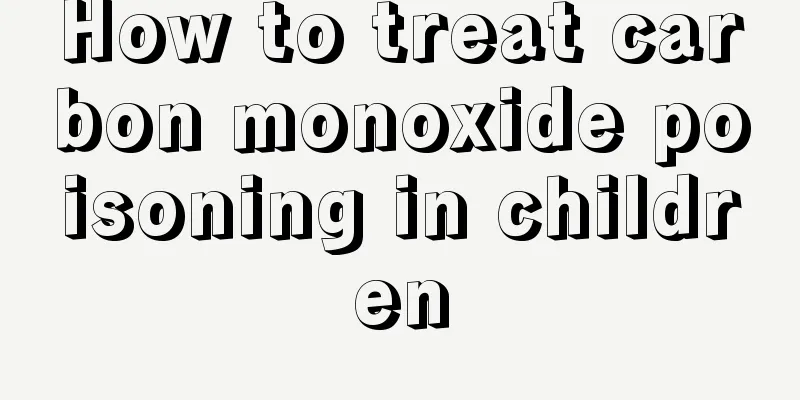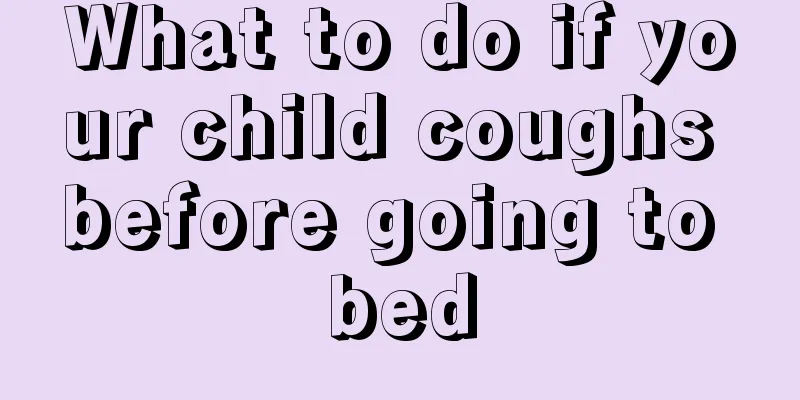How to treat carbon monoxide poisoning in children

|
Carbon monoxide poisoning is a very common phenomenon in life, especially in autumn and winter when the weather is getting colder. Many people burn coal to keep warm. If the room is not ventilated, carbon monoxide poisoning is likely to occur. The same situation can also occur in case of gas leak. Carbon monoxide poisoning can pose a serious threat to your health. How to treat carbon monoxide poisoning in children? Only if we actively receive treatment can we better reduce the harm caused by carbon monoxide poisoning. Therefore, in life, I hope everyone can understand this common sense, so that they can do more preventive health care in life. The first step in treatment is to move the patient to a CO2-free place as soon as possible or open the doors and windows to breathe fresh air; if there are temporary difficulties, the rescuer puts on a mask himself and then immediately puts on an oxygen mask for the patient until the patient is moved to a safe place. The second and most important step is to give the patient high-concentration oxygen via nasal cannula or mask (normative oxygen therapy). The quickest way to get CO out of the blood is with treatment in a hyperbaric oxygen chamber. All patients suspected of CO poisoning should be treated in a hyperbaric oxygen chamber as soon as possible, preferably within 6 hours of poisoning. Hyperbaric oxygen therapy should be given regularly to CO poisoning patients with coma, cardiovascular disease or cardiac ischemia and persistent mental and/or neurological disorders. Hyperbaric oxygen therapy can shorten recovery time and reduce the occurrence of delayed encephalopathy. For delayed encephalopathy caused by CO poisoning, hyperbaric oxygen therapy may be effective for patients with a course of less than six months, and should also be actively sought within one year. A recent study shows that hyperbaric oxygen therapy is safe for pregnant women. Carbon monoxide poisoning is extremely harmful to human health and necessary treatment must be taken. The first thing is to ensure air circulation and breathe fresh air. Because the baby's body resistance is weak, timely treatment must be given. How to treat carbon monoxide poisoning in children has been introduced in detail above. First you have to save yourself, and then take your baby to a hospital for professional treatment. |
<<: What are the symptoms of acute tonsillitis in children?
>>: What to do if your child has difficulty breathing while sleeping
Recommend
What are the dangers of adenoids hypertrophy in children?
In recent years, adenoids hypertrophy is a common...
How to deal with a crying baby who won't sleep
New mothers all have this problem, that is, their...
Newborn baby poops green on 15th day
Feces are the excretions of our body. Don’t under...
What is the best way to treat cough and asthma in children?
Asthma is a respiratory disease. I wonder if you ...
What is happening when a child passes bubbles?
Because the baby is in the period of physical dev...
What to do if your newborn baby is constipated
The healthy growth of the baby is the most concer...
How to treat sequelae of high fever convulsions in children
Children are still in a period of growth and deve...
How to deal with acute gastroenteritis in three-year-old children
Children's stomachs are very fragile. If moth...
Children with rhinitis and runny nose
When most children have a runny nose, most parent...
Will children with cerebral palsy smile when they sleep?
Cerebral palsy is a fetal central nervous system ...
Is hydronephrosis serious in children?
Hydronephrosis is more serious in children. Becau...
What are the complications of nephrotic syndrome in children?
Nephrotic syndrome in children is one of the kidn...
How many months does it take for a child to speak?
Every baby is different, and some start talking a...
White scalp on baby's head
Some white dandruff will appear on the baby's...
What should I do if my baby has a cold and fever?
In fact, in our daily life, it is quite common fo...









